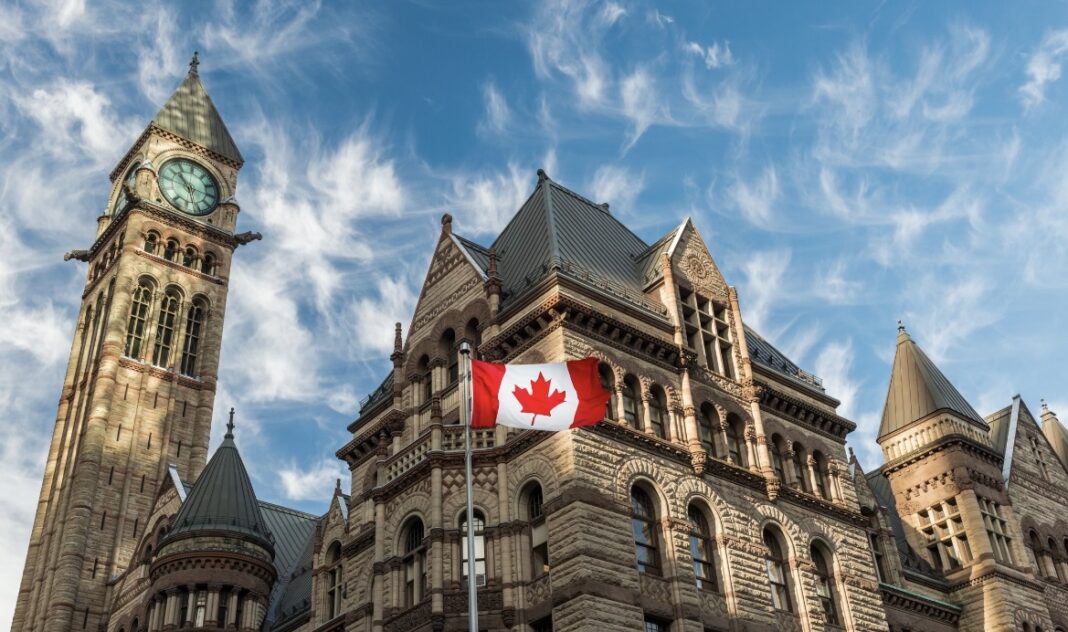Slow economic growth, combined with a population boom, has affected Canada’s standing among wealthy nations, according to new data from the Organization for Economic Co-operation and Development (OECD). Once one of the wealthiest countries in the world, Canada’s relative wealth has diminished compared to nations like the U.S., Australia, and the UK.
Over the past two decades, Canada’s GDP per capita, a key indicator of living standards, was above the OECD average among the 30 most developed countries. Recent figures show that Canada’s GDP per capita has now fallen below the OECD average.
In 2002, Canada’s GDP per capita was 8.6% higher than the average, but by 2022, it had dropped below this level. Notably, Canada’s GDP per capita, which was nearly equal to Australia’s in 2002, fell to 91.2% of Australia’s by 2022.
With an average income of $46,035, Canada ranked slightly lower than the OECD average of $46,266 in 2022.

Canada has a higher GDP per capita than New Zealand, but that gap is closing. The UK has also managed to keep pace despite the economic shocks from Brexit and other fluctuations.
Weak economic growth, coupled with rapid population growth, has exacerbated this decline. Prime Minister Justin Trudeau has sought advice from former Bank of Canada Governor Mark Carney to tackle these challenges. Meanwhile, Treasury Board Chair Anita Anand is leading a new working group to address Canada’s sluggish productivity, and Bank of Canada Deputy Governor Carolyn Rogers has emphasized the urgency of the issue, stating, “It’s time to break the glass” on productivity.
The integration of temporary and low-skilled workers has added further pressure, with unemployment rates among immigrants nearing 12%, much higher than the overall rate. Experts suggest that improving business culture, enhancing competition, and reducing interprovincial trade barriers could help boost productivity.
Despite facing many challenges, there is optimism for the future. Economic growth is projected to reach 1.3% in 2024 and 2.4% in 2025.
A country’s wealth can be measured by dividing the size of its economy by its population. In economic terms, this is known as “GDP per capita” and is an important indicator of living standards.
Gross Domestic Product (GDP) is the total value of goods produced and services provided in a country over a specific year. An increase in GDP per capita means there is more wealth to distribute—also for the government, which can collect more taxes from a growing economy without necessarily raising tax rates.
An increase in GDP per capita allows us to become wealthier and access more of the things we desire, such as public services, healthcare, and education.
Former advisor to Trudeau, Tyler Meredith, argues that GDP per capita figures can be misleading due to high population growth and recommends focusing on income and savings as better indicators of economic status.
Canada faces significant economic challenges due to weak business culture and interprovincial trade barriers. Advisors point out a lack of competition in critical sectors, and large companies invest little in technology and upskilling workers, which hampers productivity and national wealth.
They emphasize long-standing trade barriers and suggest that the government should prioritize economic growth over wealth redistribution. They propose tax incentives to retain skilled workers. Tombe warns that recent increases in capital gains taxes could deter investment and hinder growth efforts. Meredith adds that tapping into unused corporate funds and potentially utilizing a Royal Commission to address these issues could be effective solutions.
Meredith notes that Canadians remain relatively affluent, even amid “weak” economic growth and rising unemployment. Canada must tread carefully to avoid falling further behind and ensure future prosperity.





